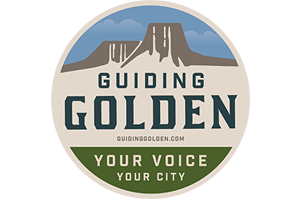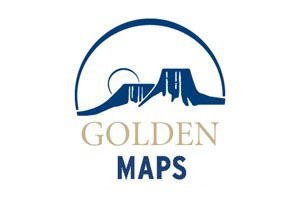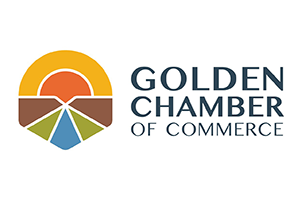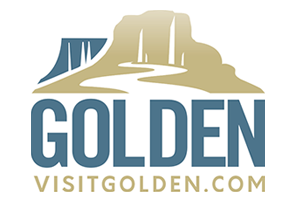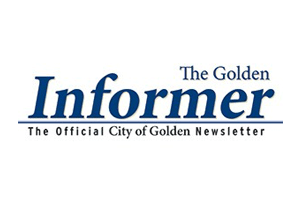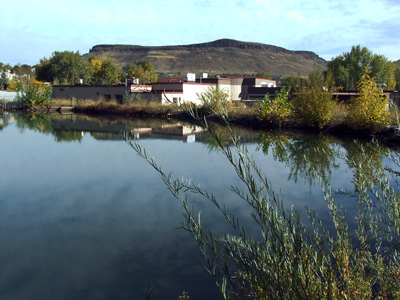 On a hot summer day, Golden citizens use enough treated, potable water to cover 24 football fields one foot deep in water! In the winter the usage drops to about 7 football fields worth a day. Before reaching the faucets of Golden residents, however, city water goes through an extensive treatment process.
On a hot summer day, Golden citizens use enough treated, potable water to cover 24 football fields one foot deep in water! In the winter the usage drops to about 7 football fields worth a day. Before reaching the faucets of Golden residents, however, city water goes through an extensive treatment process.
The Golden Water Treatment Plant uses coagulation, flocculation, sedimentation, filtration,disinfection and chemical treatment of water diverted from Clear Creek to produce drinkable (potable) water, which meets or exceeds all E.P.A. and Colorado Department of Public Health and Environment standards. See the full water treatment process, step by step from creek to water glass below. Golden was the second plant in the state to receive the “Directors Award” from the “Partnership for Safe Water;” a voluntary program sponsored by the EPA and American Water Works Association.
The plant is located at the west end of 10th Street in Golden. The water plant can make up to 12 million gallons of safe drinking water every day. Only about 1.8 million gallons per day are made in the winter, but the hot summer months require more water to be produced due to increased demand.
Personnel
Eight full time employees comprise the staff at the plant. All are licensed by the Colorado Department of Public Health and Environment as Water Treatment Plant Operators. In order to ensure optimal water quality and prompt response to any problem in the treatment process, the plant is staffed 24-hours a day, every day of the year.
The water plant is computer controlled, the central processor tracking over 2,000 signals to ensure optimized treatment. The computer signals the Operator on shift whenever any item requires Operator intervention.
Superintendent: Brynn Goe
Lead Operator: Tony Doukas
Operators: Brian Gier, Gordon Darnell, Tony Doukas, Michael Felipe, Chris Davis
Plant Mechanic: Sal Ingenthrone
Water Treatment Process
Area 1 – Clear Creek
Golden’s drinking water is supplied by Clear Creek. Clear Creek begins as snow-melt near Loveland Ski Area at the Continental Divide and flows east through Golden, eventually dumping into the South Platte River. Water taken directly out of the creek is NOT SAFE TO DRINK due to bacterial and parasitic conditions. It would make a person sick from ingesting pathogenic bacteria and parasites such as Cryptosporidium Parvum and Giardia Lamblia. The water to be treated is drawn off the creek about one mile upstream from the water plant and is piped underground into our holding ponds.
Area 2 – Holding Ponds
The two holding ponds store the raw creek water for several reasons. The ponds act as a backup water supply for the plant. If something happens to the water quality in the creek, the water stored in the ponds can be used until water quality improves. If an accident on U.S. 6 or I-70 spills contaminants into Clear Creek, the intake pipes can be closed and the plant can use the water in the ponds until the creek is safe to use again. The ponds also collect water from several unit processes, recycling water to be retreated, and allows much of the sand and debris to naturally settle out of the water before it reaches the plant. Pumps move the water from the pond to the sedimentation basin. (Area 4).
Area 3 – Chemical Feed Building
Several different chemicals are added to the water as it enters the sedimentation basin to help with the treatment process. The first chemical added is Potassium Permanganate. It is used to oxidize organic and metallic compounds (it also helps us reduce manganese which, although not a health concern, can cause black stains in plumbing fixtures, sinks, and tubs).We then add Ferric Sulfate to the rapid mix, the first mixing zone of the sedimentation basin, to begin the coagulation process. This is a chemical process which precedes flocculation and sedimentation. Polymer, a long chain of synthetic organic compounds, is also added to the water to help in flocculation (Area 4). Sodium Hydoxide (pH control) and chlorine are added at the end of the sedimentation basin, just before the water enters the filters to ensure maximum manganese removal before filtration (Area 5), and disinfection (Area 6).
 Area 4 – Flocculation / Sedimentation Basin (Clarifier)
Area 4 – Flocculation / Sedimentation Basin (Clarifier)
All of the chemicals listed above come from the chemical feed building and are mixed with the water just prior to or in the sedimentation basin area. There are several mixers and channels that the water passes through to make sure the chemicals are evenly distributed. The treatment chemicals act like a glue, enabling most of the microscopic particles in the water to coagulate, or stick together. These coagulated particles are called FLOC. The goal of the treatment is to try to make them as large and heavy as possible. As they stick together and get larger, they become heavier, and settle to the bottom of the sedimentation basin. This process of sedimentation removes almost ninety percent of the solids in the water. The settled water on the surface spills into troughs that direct the water to the filter gallery to remove the remaining ten percent of solids.
Area 5 – Filter Gallery
The 6 gravity filters are multimedia filters where the water passes downward through the filter beds. The different filter medias strain and trap the remaining particles. The filters are compromised of a top layer of anthracite, a bottom layer of sand and one of the newest underdrain systems available today. Before the filters start to get clogged with particles, the operators will “backwash” them. The backwash uses compressed air and water that is run backwards through the filters and the dirty water is sent to the reclaim basin. The reclaim basin holds the water for several hours. The clear water is then sent to the pond where the water is retreated and the settled water (sludge) is sent to the belt press for solids management.
Area 6 – Clearwell
After the water flows through the filters, the clearwell is the first area containing filtered water. The clearwell for Golden’s plant is located under the Water Treatment building in two large basins. About 400,000 gallons are stored here. A water sampling line from the clearwell is piped to the laboratory (Area 11) so continuous testing can be performed to ensure that the finished water is safe to drink. After the filtered water has had sufficient contact time with the primary disinfectant (chlorine) the water then becomes potable and safe to drink. Before the water leaves the treatment plant sodium hydroxide is added to the water for pH stabilization and corrosion control. This is the last treatment process before water is delivered to the consumer.
Area 7 – Storage and Distribution System
Large pumps at the plant pressurize the water pipes to the North Reservoir (near Highway 93 and Pine Ridge Road) and to the South Reservoir (near the archway on Lookout Mountain Road). The North Reservoir holds up to 1.25 million gallons; additional pumps at the north reservoir move water to two other tanks each holding another 1 million gallons. Two additional pumps at one of those tanks pushes water to a third tank on the north side that holds 250,000 gallons. The South Reservoir holds approximately 2 million gallons and pumps to 4 other tanks, each holding an additional 1 million gallons, with one holding 2 million gallons. Currently, the maximum storage capacity for the city’s finished drinking water is 10.7 million gallons. The stored water creates water pressure through elevation differences, and is available for not only drinking water, but fire protection. Underground pipes, or water mains, of different sizes transport the water from the storage tanks to the houses and businesses in Golden. Meters on the lines going into buildings monitor everyone’s individual water use. Residents are then billed according to their water use. That means the more water you conserve, the less money you’ll have to pay on your bill!
Area 8 – The Environmental Services Laboratory
Golden has its own state certified laboratory to ensure that the treated water is safe to drink. Our water quality must constantly comply with standards established by the U.S. Environmental Protection Agency and the State of Colorado Department of Public Health and Environment. The water is tested daily for numerous parameters by our laboratory staff, the water plant operators and by continuous on-line monitoring by process instrumentation. Water samples are also taken routinely from sample points throughout the City to ensure that the water at your home meets or exceeds all National Primary Drinking Water Standards. Values for parameters of the treated water change with the time of year. Current values can be obtained by contacting the Environmental Services Lab. Some of the analytes tested include the following: Bacteriology, Chlorine, Turbidity, Alkalinity, Hardness, Dissolved Oxygen, Conductivity, pH, regulated metals, TTHMs-HAA5 (a byproduct of disinfection), TOC (total organic carbon) and Radiological Chemicals.
Water “hardness” is a common question for the Lab. Some companies sell “water softeners” to residents to reduce the degree of hardness in the water. Hard water tends to leave white mineral deposits on the ends of faucets and on shower curtains. Softeners can reduce this occurrence, and may make the water feel “slick” when showering. People on well water may have significantly higher water hardness and might consider using a softener. Golden’s water hardness fluctuates throughout the year, but usually stays between 50 and 150 parts per million. Water is generally considered “hard” above 250 parts per million. Some people use grains per gallon (1 grain/gallon = 17.24 parts/million) as units for water hardness. If you have questions about hardness or any other water quality concerns, contact the Environmental Services Division for assistance.
Please contact the Environmental Services Division 303-384-8181 with questions about your water. Additionally, the city mails (annually), to every consumer in the city, the “Consumer Confidence Report” This outlines the water quality, water updates, regulations, current hot topics, and more. The Water Treatment Plant can be contacted at 303-384-8187 for scheduling and directions.





